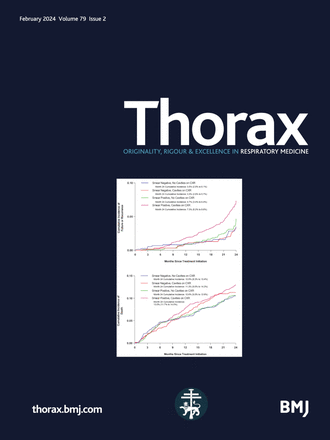Maternal prenatal carotenoids and child lung function: exploration of modifying factors
IF 7.7
1区 医学
Q1 RESPIRATORY SYSTEM
引用次数: 0
Abstract
Background While childhood airway outcomes have been associated with prenatal nutrition, few studies examined carotenoids, a group of nutrients with antioxidant properties, as potential modifiers. Objectives In n=677 mother–child dyads enrolled in the Conditions Affecting Neurocognitive Development and Learning in Early Childhood cohort, we examined associations between prenatal carotenoids (α-carotene, β-carotene, β-cryptoxanthin, lycopene and zeaxanthin) and child lung function at ages 8–9 years. Maternal-child factors that may modify associations were also assessed. Methods Second-trimester plasma carotenoid concentrations were assayed and corrected for cholesterol. Outcomes included forced expiratory volume in one second (FEV1), forced vital capacity (FVC) and FEV1/FVC z-scores. We used multivariable linear regression to investigate associations between individual carotenoids and lung function z-scores adjusting for covariates. We also examined effect modification by maternal smoking, body mass index, asthma, and child sex by including cross-product terms. Results We did not detect statistically significant associations between individual carotenoid concentrations and child lung function in main effect models. Modifying effects of prenatal smoking were observed between all five carotenoids and FEV1 (all pinteraction<0.05). For example, a twofold increase in α-carotene was associated with an increase in FEV1 z-score of 0.45 (95% CI 0.08 to 0.86) among children whose mothers smoked prenatally versus a 0.01 (−0.08 to 0.10) change in children born to women who did not smoke. Conclusion A protective association between higher prenatal carotenoid concentrations and FEV1 in middle childhood was observed among children whose mothers smoked during pregnancy. No data are available. The CANDLE data are not publicly available. Data described in the manuscript, codebook and analytical code will be made available upon request, pending review and approval by the study.孕妇产前类胡萝卜素与儿童肺功能的调节因素探讨
虽然儿童气道结局与产前营养有关,但很少有研究将类胡萝卜素(一组具有抗氧化特性的营养素)作为潜在的调节剂。在677对儿童早期神经认知发育和学习条件影响组中,我们研究了产前类胡萝卜素(α-胡萝卜素、β-胡萝卜素、β-隐黄质、番茄红素和玉米黄质)与8-9岁儿童肺功能之间的关系。还评估了可能改变关联的母婴因素。方法测定妊娠中期血浆类胡萝卜素浓度并校正胆固醇。结果包括1秒用力呼气量(FEV1)、用力肺活量(FVC)和FEV1/FVC z评分。我们使用多变量线性回归来研究单个类胡萝卜素与肺功能z-评分之间的关联。通过纳入交叉产品项,我们还检查了母亲吸烟、体重指数、哮喘和儿童性别对效果的影响。结果在主要效应模型中,我们没有发现个体类胡萝卜素浓度与儿童肺功能之间有统计学意义的关联。产前吸烟对5种类胡萝卜素和FEV1均有调节作用(均<0.05)。例如,在母亲产前吸烟的儿童中,α-胡萝卜素的两倍增加与FEV1 z-score的增加有关,其z-score为0.45 (95% CI 0.08至0.86),而不吸烟母亲所生的儿童的变化为0.01(- 0.08至0.10)。结论孕期吸烟的儿童,其产前较高的类胡萝卜素浓度与儿童中期FEV1之间存在保护性关联。无数据。CANDLE的数据不是公开的。手稿、代码本和分析代码中描述的数据将应要求提供,等待研究的审查和批准。
本文章由计算机程序翻译,如有差异,请以英文原文为准。
求助全文
约1分钟内获得全文
求助全文
来源期刊

Thorax
医学-呼吸系统
CiteScore
16.10
自引率
2.00%
发文量
197
审稿时长
1 months
期刊介绍:
Thorax stands as one of the premier respiratory medicine journals globally, featuring clinical and experimental research articles spanning respiratory medicine, pediatrics, immunology, pharmacology, pathology, and surgery. The journal's mission is to publish noteworthy advancements in scientific understanding that are poised to influence clinical practice significantly. This encompasses articles delving into basic and translational mechanisms applicable to clinical material, covering areas such as cell and molecular biology, genetics, epidemiology, and immunology.
 求助内容:
求助内容: 应助结果提醒方式:
应助结果提醒方式:


